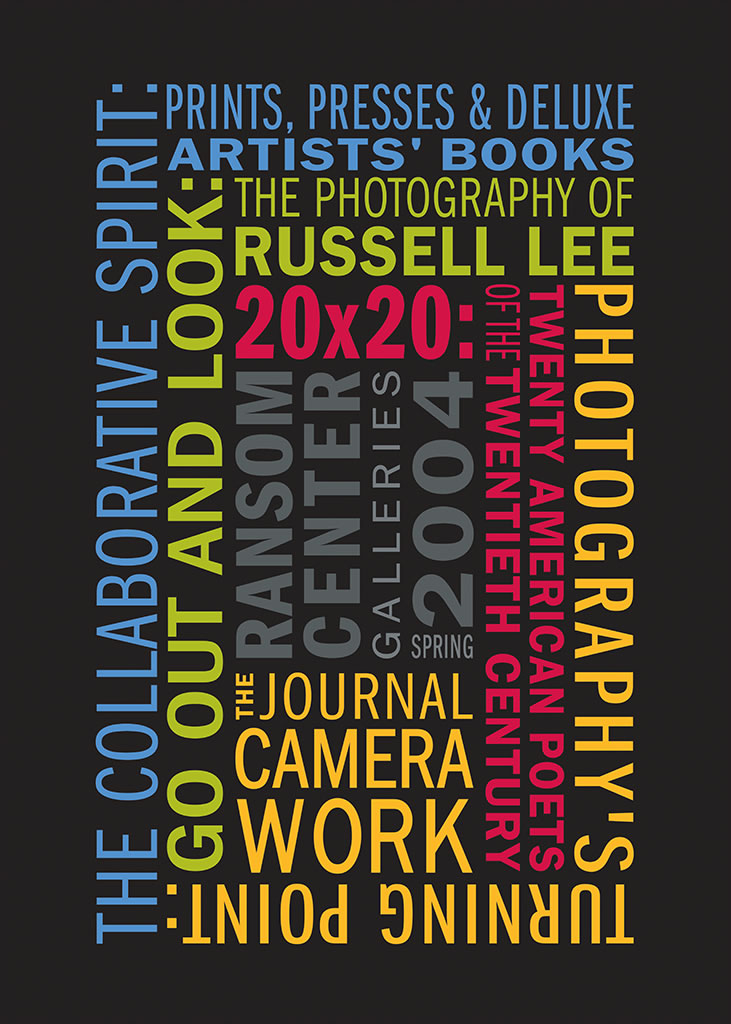20 x 20
Twenty American Poets of the Twentieth Century
April 6, 2004 – September 19, 2004
The Harry Ransom Center's exhibition "20 x 20: Twenty Poets of Twentieth-Century America" defines the perfect vision that many American poets of the first half of the 20th century strived to attain.
Following the Ransom Center's exhibition, "Make It New: The Rise of Modernism," "20 x 20" will focus on poetry, the literary genre that more than any other art form, it could be argued, defined Modernism.
Looking at the past century from a 21st century perspective requires what Walt Whitman called "a backward glance o'er travel'd roads." The 20th century, sometimes called "The American Century," was an epoch that experienced the greatest, most sustained outburst of important poetic production since the European Renaissance, the era of Shakespeare.
"Many of the century's greatest prose writers began their careers with the dream of being poets. A few attained mastery in both genres," said Kurt Heinzelman, executive curator of academic affairs and curator of the exhibition. "Poetry in the 20th century brought forth both a flowering of new lyric forms and a host of monumental latter-day epics, such as Ezra Pound's "Cantos," William Carlos Williams's "Paterson," T. S. Eliot's "The Waste Land" and "Four Quartets," Hart Crane's "The Bridge," Wallace Stevens's "Notes Toward a Supreme Fiction," Allen Ginsberg's "Howl" and Louis Zukofsky's 'A.'
"These poems were meant to reveal that despite the almost unfathomable technological advances, the major political upheavals, and sustained violence of the 20th century, poetry remained a supple and expressive instrument."
For all the poets of the Americas, not just those from the United States, Whitman stood as a paterfamilias, a muse, a presiding spirit and a proponent of a democracy, which, if a bit naïve, was aggressively anti-totalitarian.
And so the exhibition begins with Whitman, featuring a small, unpublished fragment from one of his notebooks describing West Texas and a rare woodcut portrait of the poet done by Edward Gordon Craig.
Then follows a score of poets: Edgar Lee Masters, E.E.Cummings, Robert Frost, Hart Crane, Carl Sandburg, Langston Hughes, Wallace Stevens, Lorine Niedecker, Vachel Lindsay, Louis Zukofsky, William Carlos Williams, Karl Shapiro, Ezra Pound, Elizabeth Bishop, Marianne Moore, Robert Lowell, Robinson Jeffers, Allen Ginsberg, T.S. Eliot and Anne Sexton.
Why these 20?
"A writer's greatness," Ezra Pound once claimed, "can, in certain dimensions, be measured by the amount of his time he contains." Perhaps that is what, at the least, distinguishes these 20. At least, for each of these 20, a noteworthy body of work is archived in the Ransom Center collections, and in those archives is evidence of how these poets tried to "contain their time."
"The purposes of the 20 x 20 exhibition are twofold," Heinzelman says, "to show how and where these poets looked for the sources of their creativity and to illustrate what each poet imagined to be the power of poetry. By doing so we may suggest what social good or cultural knowledge poetry can go on expressing into the future, remembering Whitman's timeless words of 1888: 'the strongest and sweetest songs yet remain to be sung.'"
The exhibition displays more than 120 pieces of work.


